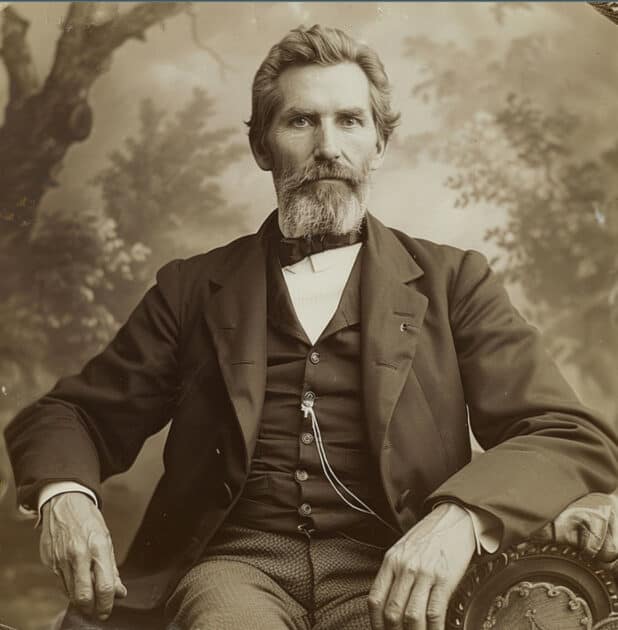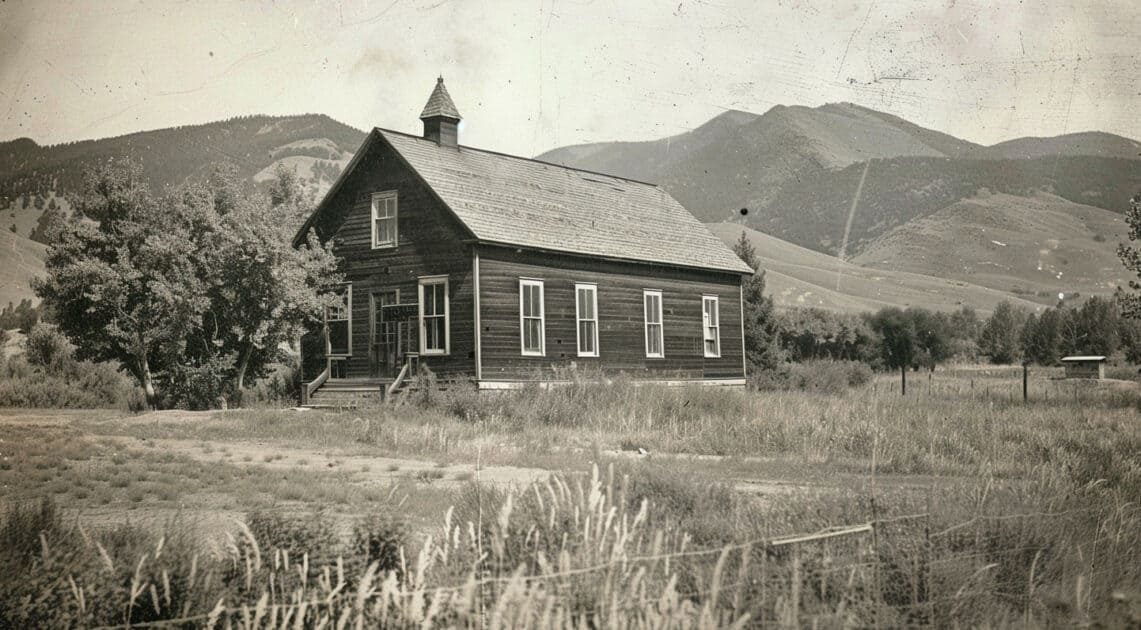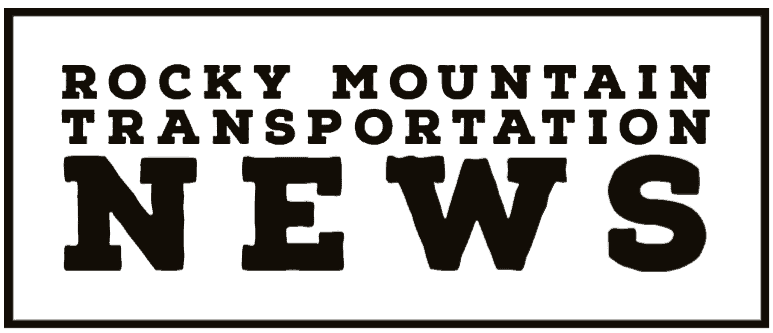History and Development of Edwards, Colorado
From its humble beginnings as a railroad stop to its current status as a thriving mountain community, Edwards, Colorado, has undergone a remarkable transformation. This unassuming town in Eagle County has grown from a quiet farming settlement into a vibrant residential and commercial center, all while maintaining its deep connection to the surrounding Rocky Mountain landscape.

Origins: From Native American Land to Homesteading
Long before European settlers arrived in the Eagle River Valley, the land that would become Edwards, Colorado, was home to the Ute people, also known as the Nuchu. These indigenous inhabitants connected deeply to the land, living in harmony with the pristine wilderness for thousands of years. The Utes were skilled hunters and gatherers, adapting to the challenging mountain environment and developing a rich culture deeply intertwined with the natural world.

The mid-19th century brought significant changes to the region. The discovery of gold and silver in the Colorado Rockies sparked a rush of prospectors and settlers into Ute territory. In 1879, the Utes were forcibly removed from much of their land in Colorado, including the Eagle River Valley, through a series of treaties and conflicts with the U.S. government.
As the Utes were displaced, homesteaders began to arrive in the area that would become Edwards. The Homestead Act of 1862 allowed settlers to claim 160 acres of land if they lived on it and improved it for five years. This legislation drew many hopeful farmers and ranchers to the Eagle River Valley, attracted by the promise of free land and the opportunity to build a new life.
Railroad Arrival: Edwards Gains Recognition
The arrival of the Denver and Rio Grande Western Railroad in 1887 marked a turning point for the fledgling settlement. The railroad provided a vital link to the outside world and brought more settlers to the area. As the community grew, it began to take shape around the Edwards Depot, which became a central gathering place and hub of activity.
These early years of settlement were characterized by hard work, resilience, and community spirit. Homesteaders faced numerous challenges, including harsh winters, isolation, and the difficulties of farming at high altitudes. Despite these obstacles, they persevered, gradually transforming the wild landscape into productive farmland and establishing the roots of the community that would become Edwards, Colorado.

The town adopted the name “Edwards,” honoring Melvin Edwards, a resident of nearby Red Cliff who later became Colorado’s Secretary of State. This change marked the beginning of Edwards’ growth from a simple ranch to an increasingly important community in the region.
Agricultural Beginnings and Early Growth
Agriculture formed the backbone of Edwards’ early economy, with ranching and farming as the primary activities. The fertile valley supported a variety of crops, but potatoes and lettuce emerged as major products. Cattle ranching also thrived, taking advantage of the abundant grazing land in the surrounding hills and meadows.
As the community grew, it began to develop the infrastructure necessary for a proper town. A significant milestone was reached in 1912 with the construction of the first school, reflecting the community’s commitment to education and its growing population. This development marked Edwards’ transition from a loose collection of homesteads to a more cohesive community.

In the early 1900s, Edwards slowly but steadily expanded its agricultural base. Farmers and ranchers in the area faced numerous challenges, including the harsh mountain climate, isolation, and the difficulties of transporting goods to market. However, the community’s resilience and the railroad’s presence helped overcome many of these obstacles.
Overcoming Hardships: The Great Depression and World War II
Like many American communities, Edwards faced difficulties during the Great Depression and World War II. The economic downturn of the 1930s impacted the town significantly, but residents supported each other, demonstrating their resilient spirit.
During the Great Depression, Edwards faced severe economic hardships like much of rural Colorado. The agricultural sector, which formed the backbone of the local economy, was hit particularly hard. Farmers struggled with falling crop prices, drought conditions, and, in some cases, loss of land due to foreclosures. Many residents turned to subsistence farming, growing enough to feed their families and selling any surplus.
World War II brought significant changes to Colorado and, by extension, to Edwards. The state saw an influx of military personnel and the expansion of existing military installations. While Edwards itself didn’t host major military facilities, the broader economic impact of the war effort likely affected the town. Many of Edwards’ young men left to serve in the armed forces, altering the community’s demographics and labor force.
Despite the hardships, this period laid the groundwork for future growth. The resilience developed during the Depression and the economic boost from wartime production positioned Edwards and the surrounding Eagle County for the post-war boom. The skills and adaptability gained during these challenging years would prove invaluable as the region transitioned into a new era of development, particularly with the rise of the ski industry in the decades following World War II.
Vail’s Influence: A New Chapter for Edwards
The opening of Vail Mountain in 1962 marked the beginning of a new era for the entire Eagle River Valley, including Edwards. What was once a quiet farming community found itself in close proximity to one of the country’s most popular ski destinations, a development that would profoundly shape Edwards’ growth and character in the coming decades.
As Vail rapidly grew into an international ski resort, its influence rippled outward, transforming the surrounding communities. Edwards, located just 14 miles west of Vail, was particularly affected by this growth. The influx of tourists, seasonal workers, and new residents created opportunities and challenges for Edwards.
One of the most significant impacts was on Edwards’ housing market. As Vail became increasingly upscale and expensive, many workers and locals began looking for more affordable living options nearby. With its lower cost of living and relaxed atmosphere, Edwards became an attractive alternative. This led to a surge in residential development, with new neighborhoods and housing complexes springing up to accommodate the growing population.
Improvements and Expansion

The 1970s and 1980s brought significant improvements to Edwards, setting the stage for future growth. The expansion of Highway 6 improved connections with nearby towns, and the creation of the Eagle River Water and Sanitation District in 1979 introduced modern water and sewer services to the area.
The 1980s also saw the beginnings of Edwards’ transformation into a commercial center for the valley. The construction of the Riverwalk at Edwards, which began in 1984, would become a cornerstone of the community, offering a mix of residential and commercial spaces. The Riverwalk has continued to evolve, with recent plans for expansion including additional residential units and restaurant space.
In 1990, the development of the Edwards Corner shopping center further expanded the town’s amenities and services. Work on this project began in the late 1980s, with the goal of creating a commercial hub for the growing community. The Edwards Corner development included retail spaces, offices, and restaurants, catering to the needs of both residents and visitors.
The Cordillera luxury golf course community, which opened in 1987, represented a significant investment in high-end residential development. Despite facing challenges during the economic downturn of the early 2000s, Cordillera has since rebounded, contributing to Edwards’ reputation as a desirable location for both permanent residents and second-home owners.
| Year | Development |
|---|---|
| 1984 | Riverwalk at Edwards construction begins |
| 1987 | Cordillera luxury golf course community opens |
| 1990 | Edwards Corner shopping center is developed |
These projects transformed Edwards from a quiet mountain town into a commercial center for the entire valley, bringing new amenities and opportunities to residents.
Edwards Today: A Flourishing Mountain Community
Today, Edwards is the largest unincorporated community in Eagle County, with an approximate population of 10,000. Despite its significant growth, the town has managed to maintain a strong sense of community and a deep connection to its natural surroundings, embodying the essence of modern mountain living.
Community Spaces and Recreation
Edwards has made substantial investments in community spaces and recreational facilities, demonstrating its commitment to providing an exceptional quality of life for its residents. These amenities cater to a wide range of interests and age groups, fostering a vibrant and active community.
Freedom Park
Freedom Park serves as a versatile community hub, offering year-round outdoor activities:
| Amenity | Description |
|---|---|
| Skate park | Modern facility for skateboarding enthusiasts |
| Playgrounds | Multiple areas for children of various ages |
| Walking trails | Extensive paths for leisurely strolls or jogging |
| Sports fields | Well-maintained areas for team activities |
| Splash park | Water feature for summer fun |
| Picnic areas | Covered spaces for family gatherings |
Edwards Field House
The Edwards Field House is a unique indoor recreational center that serves as a hub for sports and fitness activities throughout the year:
| Feature | Description |
|---|---|
| Gymnastics center | Full-size facility for aspiring gymnasts |
| Trampoline area | Space for both fun and training |
| Climbing walls | Challenging surfaces for rock climbing enthusiasts |
| Indoor turf field | 15,000 square foot area ideal for soccer and lacrosse |
| Basketball court | Indoor court for year-round play |
Year-Round Activities
While the Eagle River Valley gained fame for its world-class skiing, Edwards has successfully positioned itself as a year-round destination:
| Season | Activities |
|---|---|
| Winter | Skiing, snowboarding, ice skating, snowshoeing |
| Spring | Hiking, fly fishing, mountain biking |
| Summer | Whitewater rafting, horseback riding, golf |
| Fall | Leaf peeping, hiking, biking |
The Eagle River and Gore Creek provide excellent fly fishing throughout much of the year, attracting anglers from far and wide. The paved Eagle Valley Trail, which runs through Edwards, serves both as a popular recreational path and a commuter route, promoting an active and environmentally friendly lifestyle.
Education and Culture
Edwards has evolved into an educational and cultural center for the entire Eagle River Valley. The opening of Colorado Mountain College’s (CMC) Edwards campus in 2006 was a significant milestone, bringing higher education opportunities directly to the community. This development has had a profound impact on Edwards, contributing to its growth and diversification.
Colorado Mountain College (CMC) Edwards Campus
The establishment of the CMC Edwards campus has been instrumental in shaping the town’s educational landscape. The campus offers a wide range of programs, including certificates, associate degrees, and bachelor’s degrees, catering to the diverse needs of the local population. Key features of the CMC Edwards campus include:
| Feature | Description |
|---|---|
| Small classes | Ensures personalized attention and a supportive learning environment |
| Expert faculty | Instructors who are leaders in their respective fields |
| Free tutoring | Academic support available to all students |
| Evening childcare | Free childcare services for students attending evening classes |
| Digital library | Access to thousands of periodicals and texts |
| Community events | Engaging speakers and cultural events that enrich the community |
| Affordable housing | New affordable housing units for students and staff, addressing local needs |
The presence of CMC has not only provided educational opportunities but also fostered economic growth and community development. The college’s programs in resort management, outdoor recreation, and environmental science are particularly relevant to the local economy, supporting the area’s tourism and outdoor industries.
Through its thoughtful development of community spaces, investment in education and culture, and embrace of year-round recreational opportunities, Edwards has transformed from a quiet mountain town into a flourishing community that offers the best of both worlds – the serenity of mountain living and the amenities of a modern, vibrant town.
Issues and Future Prospects
As Edwards continues to grow, it faces several challenges and opportunities that will shape its future. These issues require careful consideration and strategic planning to ensure the town remains a vibrant and sustainable community.
Housing Costs
The increasing popularity of Edwards has led to a significant rise in housing prices, making it difficult for working professionals and young families to afford homes. As of 2024, the median listing home price in Edwards was $5.1 million, reflecting a 43.7% year-over-year increase. This trend has created a somewhat competitive housing market, with homes selling quickly and often above the listing price. Addressing housing affordability is crucial to maintaining a diverse and inclusive community.
Balanced Growth
Managing development while preserving natural areas and maintaining the town’s unique character is a critical challenge for Edwards. The Edwards Area Community Plan emphasizes the importance of promoting compact, pedestrian-friendly development in the commercial core while protecting the surrounding natural resources. This approach aims to balance growth with environmental stewardship, ensuring that new developments are sustainable and in harmony with the town’s character.
Economic Variety
Expanding beyond tourism and real estate to create a more stable and resilient local economy is another key focus for Edwards. The town has traditionally relied heavily on these sectors, but there is a growing recognition of the need for economic diversification. Efforts are being made to attract new businesses and industries, particularly those that can provide year-round employment opportunities. The Vail Valley Partnership’s Economic Development Plan outlines strategies to support local businesses, foster innovation, and enhance workforce development.
Ongoing Development
Projects like the West End development aim to address housing needs while considering environmental impact and community requirements. The West End project, for example, includes plans for a mixed-use development that combines residential, commercial, and recreational spaces. This type of development is designed to meet the needs of a growing population while minimizing the environmental footprint and preserving the town’s natural beauty.
Community Engagement and Infrastructure
Community engagement and infrastructure improvements are also essential for Edwards’ future. The town has invested in enhancing transportation infrastructure, such as the expansion of Highway 6 and the development of the Eagle Valley Trail, to improve connectivity and support sustainable growth. Additionally, the creation of the Eagle River Water and Sanitation District has provided modern water and sewer services, laying the groundwork for future development.
Strategic Planning and Vision
The Edwards Area Community Plan serves as a roadmap for the town’s future, outlining goals, policies, and strategies to promote balanced growth and economic resilience. Key strategies include:
- Promoting compact, pedestrian-friendly development in the Edwards Commercial Core.
- Protecting natural resources and ensuring new developments are environmentally sustainable.
- Enhancing transportation infrastructure to improve connectivity and reduce traffic congestion.
- Supporting local businesses and fostering innovation to diversify the economy.
- Providing affordable housing options to maintain a diverse and inclusive community.
By addressing these challenges and leveraging opportunities, Edwards can continue to thrive as a flourishing mountain community. The town’s commitment to thoughtful planning, community engagement, and sustainable development will be crucial in navigating the complexities of growth and ensuring a bright future for all its residents.
Closing Thoughts
Edwards, Colorado’s story shows the power of community, adaptability, and vision. From its beginnings as a railroad stop to its current status as a thriving mountain town, Edwards has continually reinvented itself while honoring its roots. As it addresses future challenges, Edwards exemplifies how a small mountain community can progress while preserving its unique character and connection to nature.
The evolution of Edwards from homestead land to a vibrant community of 10,000 reflects Colorado’s broader development and the lasting appeal of mountain living. As Edwards moves forward, it does so with the same spirit of innovation and community that has defined its past, ready to write the next chapter in its remarkable history.


